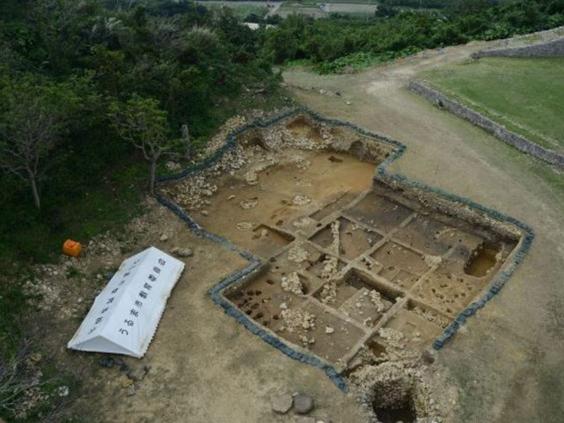The rare coins are thought to date back to around 400AD
Archaeologists were left baffled by the "strange" discovery of ancient Roman coins buried in the ruins of a castle in Japan.
The four copper coins were retrieved from soil beneath Katsuren Castle on Okinawa Island, and were originally thought to be a hoax before their true provenance was revealed.
The designs on the coins are difficult to decipher as they have been eroded over time, but x-ray analysis revealed several of the relics bore the image of Emperor Constantine I.
Since excavation on the site began in 2013, researchers have also found a further six coins which may be dated back to the Ottoman Empire in the late 17th century.
The Roman coins appear to be much older, dating back to at least 400AD according to estimates.
The board of education in the Japanese city of Uruma announced the discovery, and said the story of how the coins came to arrive in Japan remained shrouded in doubt.
Katsuren Castle was known to have been the focal point of trading partnerships with China and other Asian countries, but ties to Europe were not evident until the recovery of the coins.
The ruins of the castle were registered in 2000 on the World Heritage list as part of the Gusuku Sites and Related Properties of the Kingdom of Ryukyu.
Education spokesman Masaki Yokou told CNN: "It is a strange and interesting find. We don't think that there is a direct link between the Roman Empire and Katsuren Castle, but the discovery confirms how this region had trade relations with the rest of Asia."
The coins will be analysed further and displayed at Uruma City museum on Okinawa until the end of November.

No comments:
Post a Comment